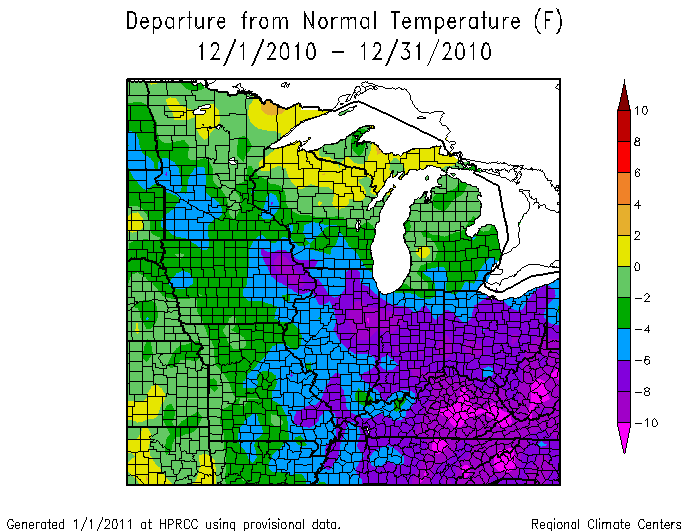Temperatures in Minnesota were far below normal in December, but these people are convinced temperatures were warm. Proof that you can get Pavlov’s humans to salivate global warming spew by ringing a bell.
http://www.hprcc.unl.edu/products/maps/acis/mrcc/MonthTDeptMRCC.png
Unusual sightings lead experts to ponder possible global warming effects
WINONA, Minn. – A number of rare bird sightings from the Winona area’s Dec. 18 Christmas Bird Count left some local experts scratching their heads.
“You never know what you’re going to find,” said Richie Swanson, an area bird expert and longtime participant in the count. “It’s kind of like rolling the dice.”
Bird enthusiasts and other volunteers have ventured out around Christmas every year since 1900 to tally the nation’s bird population. Data collected from the count are given to the National Audubon Society and used to aid in wildlife conservation and help assess the health of animals.
“It acts as a way for us to track populations,” Swanson said.
Sightings of the yellow-rumped warbler and the yellow-bellied sapsucker, a species of woodpecker, were among the most unusual local spottings, said Bill Drazkowski, a local bird buff.
It’s rare to spy them so far north this late into the migration season, he said. Both birds are common to the Winona area in spring and summer but flock to regions south of Kansas and down into Mexico for the winter.
Area ornithology experts believe the misplaced birds are here because of a shift in weather patterns caused by global warming.
“It’s over-simplified science,” Swanson said, but global warming has changed plant and insect composition. The alterations have affected the structure of the animals’ habitat and food chain, which makes it difficult for the birds to reproduce and survive.
Volunteers recorded 51 species and 5,823 individual sightings from December’s count, said Walt Carroll, data compiler for Winona’s bird club, The Hiawatha Valley Audubon Society. The numbers are slightly up from last year’s 5,023 sightings, but they’re far from the record 78 species and 18,426 recorded in 1998.
“It’s an echo of what’s going on all around the world,” Carroll said. “It’s just warmed up that much.”



Some Minnesotans got it right:
http://www.youtube.com/watch?v=u03QcymdCtg
““You never know what you’re going to find,” said Richie Swanson, an area bird expert and longtime participant in the count. “It’s kind of like rolling the dice.””
..and yet some idiot wants to blame it on AGW?
How many people were doing the survey in each year? That is the primary cause for the difference in count.
It is not unusual for individual birds to not migrate for reasons besides “Climate Change” but climate change is a natural situation and animal populations adapt in various ways.
If they were given a ceck list to “Tick” the type of bird spotted it would allow for fumble fingers to respond to cold conditions by “Ticking” the wrong box. Grannies eyes might not be as sharp as they were a few years ago.
Is Minnesota one of the states where medicinal pain relief is available? WOW Dude! Look at the flying pig I just saw! What kind of bird should we call that?
Here’s the plot of yellow-rumped warblers and yellow-bellied sapsuckers in Minnesota from 1900-2009 (missing this year’s data).
http://i51.tinypic.com/331i243.jpg
The sapsuckers have been rarely seen almost every year since 1970.
This plot can be generated from http://audubon2.org/cbchist/graph.html
Pavlov’s humans thats some funny shit!!